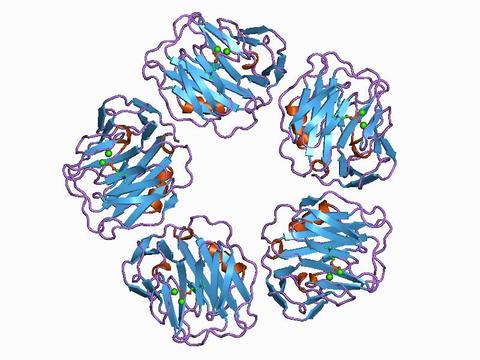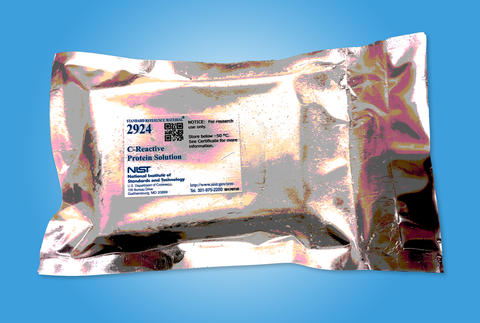
The liver creates C-reactive protein in response to inflammation.
Cardiovascular disease caused one out of three deaths in the United States in 2016, and for decades it has been the leading killer for both men and women. Hoping to reduce these numbers, researchers at the National Institute of Standards and Technology (NIST) have developed a new Standard Reference Material (SRM) that can improve the results of a common blood test used to assess a person’s risk of heart disease.
The blood test measures C-reactive protein (CRP), which is a marker for inflammation in the body. While the precise relationship between slightly elevated CRP levels and cardiovascular disease is still being determined, research suggests that inflammation in arteries can lead to plaque buildup, and then to heart attacks and strokes. Some studies indicate that high-sensitivity CRP (hsCRP) tests—which detect minute amounts of the protein in blood—may have advantages for predicting heart disease when cholesterol counts are normal.
The hsCRP test kits are made from antibodies that attach to CRP in a blood sample like a lock and key to provide an accurate count of the protein. However, depending on their source and quality, some of these antibodies attach better than others, leading to variable results between batches and kit makers.
“We began developing a reference material for the hsCRP test when we recognized that a patient’s test results might depend on which test kit was used,” said Eric Kilpatrick, a biologist who has specialized in protein measurement at NIST for more than a decade. “Repeatable, reliable results, no matter when or where the blood test is performed, are critical to health, and without them, it is difficult for doctors to use hsCRP to decide treatment options and to follow a patient’s progress accurately,” he said.

NIST’s SRM 2924 C-Reactive Protein Solution provides a reference benchmark tool that manufacturers can use to ensure their kit test results are consistent from batch to batch by confirming that the antibodies going into the kits correctly bind CRP.
When the results of hsCRP tests can be traced to the NIST SRM, doctors can have greater trust in the test scores, and treat and advise their patients with confidence.
Researchers are continuing their quest for ultimate accuracy. “The gold standard for CRP will be an SRM in serum, the liquid component of blood,” Kilpatrick said. That work will begin soon, and SRM 2924 is leading the way.
SRMs are among the most widely used NIST products. The institute prepares, analyzes and sells more than 1,200 carefully characterized materials used to check the accuracy of instruments and test procedures used in manufacturing, clinical chemistry, environmental monitoring, electronics, criminal forensics and dozens of other fields.

